KIT receptor gain-of-function in hematopoiesis enhances stem cell self-renewal and promotes progenitor cell expansion
- PMID: 23681919
- PMCID: PMC3775897
- DOI: 10.1002/stem.1419
KIT receptor gain-of-function in hematopoiesis enhances stem cell self-renewal and promotes progenitor cell expansion
Abstract
The KIT receptor tyrosine kinase has important roles in hematopoiesis. We have recently produced a mouse model for imatinib resistant gastrointestinal stromal tumor (GIST) carrying the Kit(V558Δ) and Kit(T669I) (human KIT(T670I) ) mutations found in imatinib-resistant GIST. The Kit(V558Δ;T669I/+) mice developed microcytic erythrocytosis with an increase in erythroid progenitor numbers, a phenotype previously seen only in mouse models of polycythemia vera with alterations in Epo or Jak2. Significantly, the increased hematocrit observed in Kit(V558Δ;T669I/+) mice normalized upon splenectomy. In accordance with increased erythroid progenitors, myeloerythroid progenitor numbers were also elevated in the Kit(V558Δ;T669I/+) mice. Hematopoietic stem cell (HSC) numbers in the bone marrow (BM) of Kit(V558Δ;T669I/+) mice were unchanged in comparison to wild-type mice. However, increased HSC numbers were observed in fetal livers and the spleen and peripheral blood of adult Kit(V558Δ;T669I/+) mice. Importantly, HSC from Kit(V558Δ;T669I/+) BM had a competitive advantage over wild-type HSC. In response to 5-fluorouracil treatment, elevated numbers of dividing Lin(-) Sca(+) cells were found in the Kit(V558Δ;T669I/+) BM compared to wild type. Our study demonstrates that signaling from the Kit(V558Δ;T669I/+) receptor has important consequences in hematopoiesis enhancing HSC self-renewal and resulting in increased erythropoiesis.
Keywords: Erythroid progenitors; Hematopoietic stem cells; Self-renewal; Signal transduction.
Copyright © 2013 AlphaMed Press.
Figures
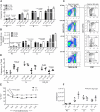
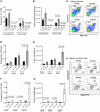
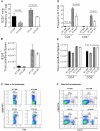

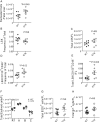

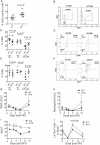
Similar articles
-
Differentiation of fetal hematopoietic stem cells requires ARID4B to restrict autocrine KITLG/KIT-Src signaling.Cell Rep. 2021 Nov 23;37(8):110036. doi: 10.1016/j.celrep.2021.110036. Cell Rep. 2021. PMID: 34818550 Free PMC article.
-
Imatinib resistance and microcytic erythrocytosis in a KitV558Δ;T669I/+ gatekeeper-mutant mouse model of gastrointestinal stromal tumor.Proc Natl Acad Sci U S A. 2012 Aug 21;109(34):E2276-83. doi: 10.1073/pnas.1115240109. Epub 2012 May 31. Proc Natl Acad Sci U S A. 2012. PMID: 22652566 Free PMC article.
-
Direct engagement of the PI3K pathway by mutant KIT dominates oncogenic signaling in gastrointestinal stromal tumor.Proc Natl Acad Sci U S A. 2017 Oct 3;114(40):E8448-E8457. doi: 10.1073/pnas.1711449114. Epub 2017 Sep 18. Proc Natl Acad Sci U S A. 2017. PMID: 28923937 Free PMC article.
-
Kit and Scl regulation of hematopoietic stem cells.Curr Opin Hematol. 2014 Jul;21(4):256-64. doi: 10.1097/MOH.0000000000000052. Curr Opin Hematol. 2014. PMID: 24857885 Review.
-
Mouse hematopoietic stem cells and the interaction of c-kit receptor and steel factor.Int J Cell Cloning. 1991 Sep;9(5):451-60. doi: 10.1002/stem.1991.5530090503. Int J Cell Cloning. 1991. PMID: 1720154 Review.
Cited by
-
Hematopoietic Signaling Mechanism Revealed from a Stem/Progenitor Cell Cistrome.Mol Cell. 2015 Jul 2;59(1):62-74. doi: 10.1016/j.molcel.2015.05.020. Epub 2015 Jun 11. Mol Cell. 2015. PMID: 26073540 Free PMC article.
-
p21/Zbtb18 repress the expression of cKit to regulate the self-renewal of hematopoietic stem cells.Protein Cell. 2024 Nov 1;15(11):840-857. doi: 10.1093/procel/pwae022. Protein Cell. 2024. PMID: 38721703 Free PMC article.
-
Phospho-proteomic discovery of novel signal transducers including thioredoxin-interacting protein as mediators of erythropoietin-dependent human erythropoiesis.Exp Hematol. 2020 Apr;84:29-44. doi: 10.1016/j.exphem.2020.03.003. Epub 2020 Apr 4. Exp Hematol. 2020. PMID: 32259549 Free PMC article.
-
Differentiation of fetal hematopoietic stem cells requires ARID4B to restrict autocrine KITLG/KIT-Src signaling.Cell Rep. 2021 Nov 23;37(8):110036. doi: 10.1016/j.celrep.2021.110036. Cell Rep. 2021. PMID: 34818550 Free PMC article.
-
ARID4B: An Orchestrator from Stem Cell Fate to Carcinogenesis.Cells. 2025 Jun 10;14(12):872. doi: 10.3390/cells14120872. Cells. 2025. PMID: 40558499 Free PMC article. Review.
References
-
- Agosti V, Corbacioglu S, Ehlers I, Waskow C, Sommer G, Berrozpe G, Kissel H, Tucker CM, Manova K, Moore MA, Rodewald HR, Besmer P. Critical role for Kit-mediated Src kinase but not PI 3-kinase signaling in pro T and pro B cell development. The Journal of experimental medicine. 2004;199:867–878. - PMC - PubMed
-
- Akashi K, Traver D, Miyamoto T, Weissman IL. A clonogenic common myeloid progenitor that gives rise to all myeloid lineages. Nature. 2000;404:193–197. - PubMed
-
- Besmer P. The kit ligand encoded at the murine Steel locus: a pleiotropic growth and differentiation factor. Curr Opin Cell Biol. 1991;3:939–946. - PubMed
Publication types
MeSH terms
Substances
Grants and funding
LinkOut - more resources
Full Text Sources
Other Literature Sources
Medical
Molecular Biology Databases
Research Materials
Miscellaneous

